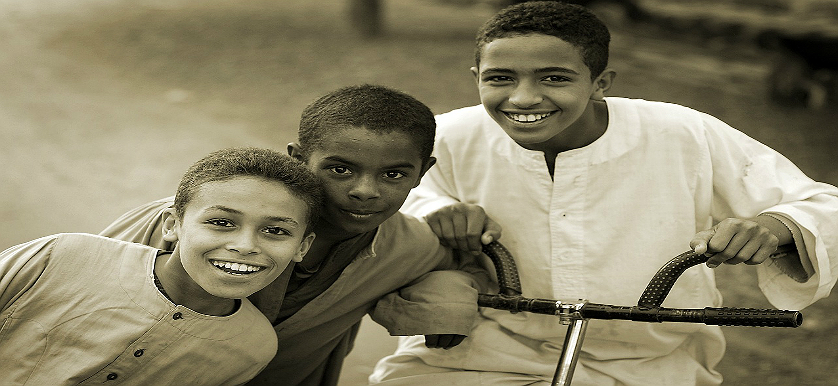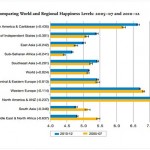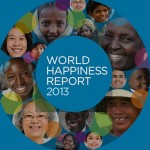The World Happiness Report – Measuring Countries’ Well-Being

The first World Happiness Report was published in April 2012, in conjunction with the U.N. High Level Meeting on happiness and well-being. This report, which ranks 155 countries by their happiness levels, has slowly gained global recognition as governments, organizations and civil societies have started relying on happiness indicators to make informed decisions.
This year, on the 20th of March, better known as World Happiness Day, the Sustainable Development Solutions Network – SDSN, supported by a three-year grant from the Ernesto Illy Foundation, has published its fifth World Happiness Report.
Jeffrey Sachs, Director of the Sustainable Development Solutions Network, stated that:
“The World Happiness Report continues to draw global attention around the need to create sound policy for what matters most to people – their well-being … this report gives evidence that happiness is a result of creating strong social foundations. It’s time to build social trust and healthy lives, not guns or walls.”
Happiness is determined both by the individual and the society he/she lives in. The research tries to measure this by analyzing eight main variables, or how we would call them, KPIs:
- Gross Domestic Product or GDP per capita – this was taken from the World Development Indicators – WDI, released by the World Bank in 2016, and uses country-specific forecasts of real GDP growth.
- Healthy Life Expectancy – based on time series data sets from the World Health Organization. The time series are constructed by generating the ratios of healthy life expectancy to life expectancy in 2012, and by applying country-specific ratios to other years to generate data.
- Social Support – the national average of the binary responses ”yes or no”, to the Gallup World Poll question, or GWP for short: “If you were in trouble, do you have relatives or friends you can count on to help you whenever you need them, or not?”.
- Freedom – the national average of binary responses to the GWP question: “Are you satisfied or dissatisfied with your freedom to choose what you do with your life?”
- Generosity – the residual of regressing the national average of GWP responses to the question: “Have you donated money to a charity in the past month?” on GDP per capita.
- Perceptions of corruption – the average of binary answers to two GWP questions: “Is corruption widespread throughout the government or not?” and “Is corruption widespread within businesses or not?”
- Positive affect – the average of previous-day affect measures for happiness, laughter, and enjoyment for GWP waves 3-7 (years 2008 to 2012, and some in 2013).
- Negative affect – the average of previous-day affect measures for worry, sadness, and anger for all waves.

Unsurprisingly, this year’s ranking shows that, once again, Nordic and Western European countries dominate the top 10 happiest countries in the world. After ranking fourth for the last two years, Norway climbed three spots and took the title of “world’s happiest country” for the first time. Denmark dropped to second place this year, followed by Iceland, Switzerland, Finland, the Netherlands, Canada, New Zealand, Australia, and Sweden.
As you might guess, the countries that scored lowest are those that are experiencing great social and economic loss due to war. All 10 bottom scoring countries are sub-Saharan African countries, namely Central African Republic, Burundi, Tanzania, Syria, Rwanda, Togo, Guinea, Liberia, South Sudan, and Yemen.
As mentioned above, this year Norway occupies first place, succeeding to do so despite its declines in oil prices. This proves that real happiness depends on much more than income.
Nonetheless, some of financially-performing top countries in the world have not fared as well, as is the case of the United States of America, which grabs the 14th spot, dropping one spot from last year. The final chapter of this year’s report focuses on “Restoring American Happiness”, which attempts to explain why happiness in the US is paradoxically falling despite increased economic growth.
The report emphasizes the fact that America’s crisis is a social one, due to deepening divisions and angst, rising social inequalities, and the rocketing mortality of middle-aged white men and women as a result of drugs, alcohol-abuse and suicide.
Other superpowers that have been found lacking in this regard include Germany, which came in at the 16th place for a second time in a row, the United Kingdom which occupies the 19th place this year, and Russia which moved up seven spots to the 49th place.
As for the top Asian countries, Japan moved up two spots to the 51st place, while China moved up four spots to the 79th place. Singapore occupies the 26th spot, Thailand the 32nd, South Korea the 56th, and Hong Kong the 71st place.

The report also measured the changes in the level of happiness from 2005-2007 to 2014-2016. These measurements have revealed that of the 126 countries with data, 95 had significant changes, 58 of which were significant increases and 38 showing significant decreases.
Among the 10 top gainers, Nicaragua takes the lead, followed by Latvia, Sierra Leone, Ecuador, Moldova, Bulgaria, Russia, Slovakia, Chile and Uzbekistan. One might notice from this ranking that the countries that experienced a positive change in regards to their social well-being are spread across the entire globe. The top gainers are from Central and South America, from Central and Eastern Europe, from sub-Saharan Africa, as well as from Central Asia.
At the other end of the scale, the 10 largest losers are Tanzania, Saudi Arabia, India, Yemen, Jamaica, Ukraine, Botswana, Greece, Central African Republic, and Venezuela.
These 10 countries with the largest declines in average life evaluations typically suffered some combination of economic, political, and social distress.
In the World Happiness Report 2016 Update, Greece, Italy and Spain figure as some of the largest losers, as they were among the four hard-hit Eurozone countries. Of the three, Greece is the only one still ranked among the ten largest declines. It is important to keep in mind that all these countries are typically marked by low values of all six variables used to explain international differences – GDP per capita, healthy life expectancy, social support, freedom, generosity and absence of corruption, as well as being subjected to violence and harm from disease.
This year’s World Happiness Report has shown us that social factors, as supporting pillars for happiness, are prevalent and encompassing. No matter if we talk about income, health, everyday life, or life at work, the importance of social factors is becoming increasingly pronounced.
Despite the many setbacks some countries have experienced in these past few years, John Helliwell, Haifang Huang and Shun Wang believe there is still hope “that simply changing the focus from the material to the social foundations of happiness will improve the rate at which lives can be sustainably improved for all, throughout the world and across generations.”
Image sources:
Tags: KPI, World Happiness, World Happiness Report





